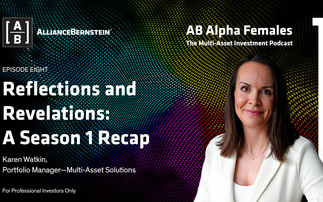Irrespective of size, funding level or maturity, defined benefit (DB) pension plans have one common goal: to pay members' pensions in full and on time.
It is well documented that most of the UK's DB plans are closed to future accrual to help sponsors bring costs under control. As a result, these plans are now maturing, their liability profiles are changing, and trustees are reviewing the appropriateness of their investment strategies.
For some schemes such developments have coincided with an improvement in their funding status, which potentially opens the door for trustees to explore a different approach to their investment strategy.
Search for stability
DB investment strategies typically were based on an equity/bond portfolio composition, the so called growth/matching portfolio. The majority of assets were given over to equities or other growth assets to provide the returns needed to close the funding gap. The allocation to bonds was intended to help reduce risk by matching the future pension payments (the liabilities).
Some challenges remain, for those schemes with material deficits then high allocations to growth assets are one of the few ways that the funding gap can realistically be closed.
On the matching side, in the past 15 years, liability-driven investment (LDI) strategies have become popular as a means of matching the liabilities. However the returns on gilts (the tool most commonly used) are insufficient to plug the funding gaps, trustees still need some form of return seeking assets alongside their LDI allocation.
For those pension schemes with less need for growth assets, today's challenge then is to find a portfolio that can deliver suitable returns but with greater certainty of outcome and one that can also complement existing LDI strategies.
Fortunately for trustees, this solution already exists: cashflow driven investment.
CDI has long been the preserve of insurance companies who used a range of fixed income assets to meet their liabilities. Given the similarities between an insurance company's liabilities and that of a maturing DB plan, it makes sense for trustees to explore CDI.
CDI strategies invest exclusively in credit assets and are designed to work alongside LDI as a replacement for traditional growth seeking assets. These credit assets deliver contractual cashflows, the payments are known in advance and therefore provide greater certainty. In addition rather than being limited to gilts like their LDI counterpart, CDI accesses a much wider range of credit assets. By taking on additional credit risk, investors should be rewarded with extra return.
Important information:
This document is intended to be for information purposes only and it is not intended as promotional material in any respect. The material is not intended as an offer or solicitation for the purchase or sale of any financial instrument. The material is not intended to provide, and should not be relied on for, accounting, legal or tax advice, or investment recommendations. Information herein is believed to be reliable but Schroders does not warrant its completeness or accuracy. No responsibility can be accepted for errors of fact or opinion. Reliance should not be placed on the views and information in the document when taking individual investment and/or strategic decisions. Past performance is not a reliable indicator of future results, prices of shares and the income from them may fall as well as rise and investors may not get back the amount originally invested. Schroders has expressed its own views in this document and these may change. Issued by Schroder Investment Management Limited, 1 London Wall Place, London EC2Y 5AU, which is authorised and regulated by the Financial Conduct Authority. For your security, communications may be taped or monitored. CS1525b







